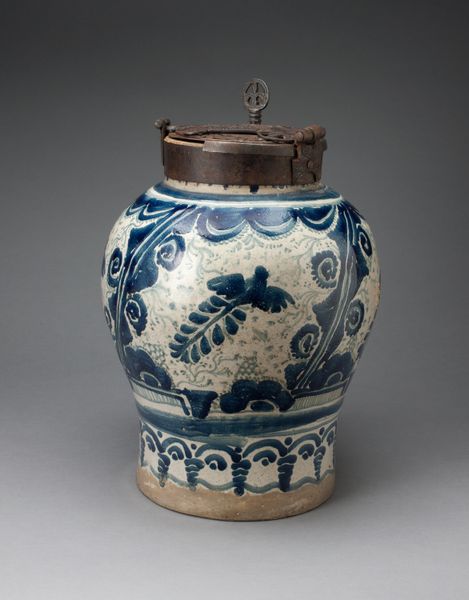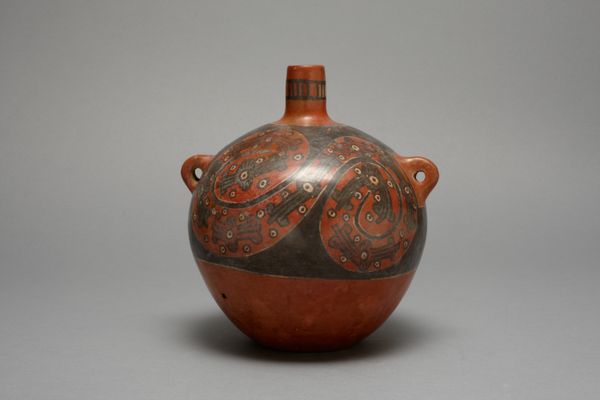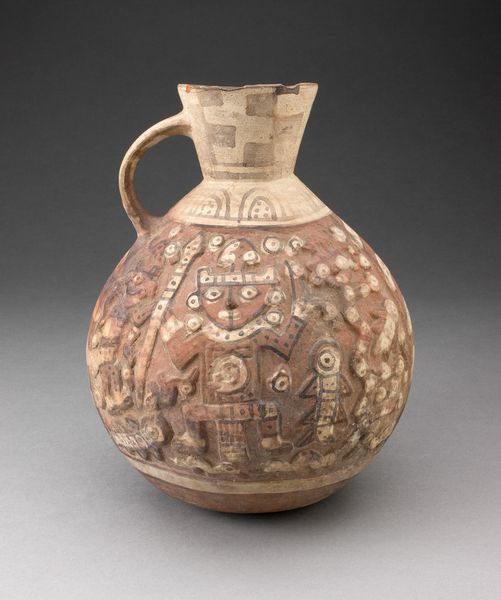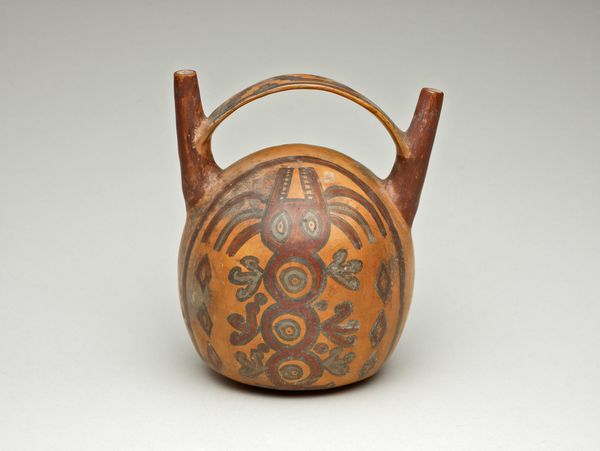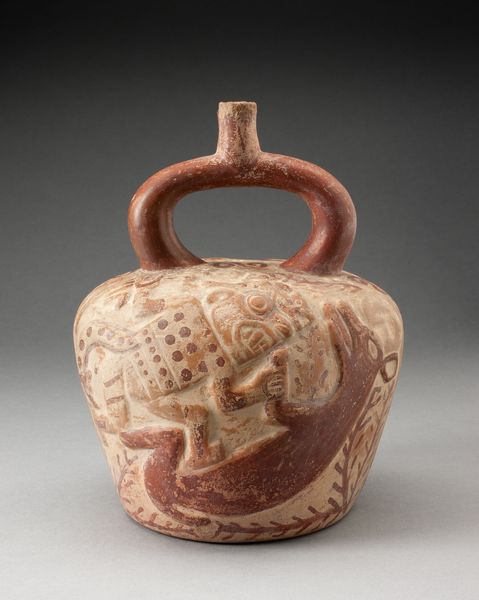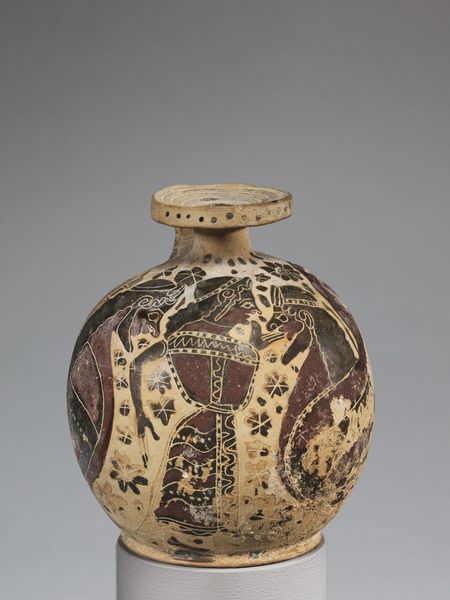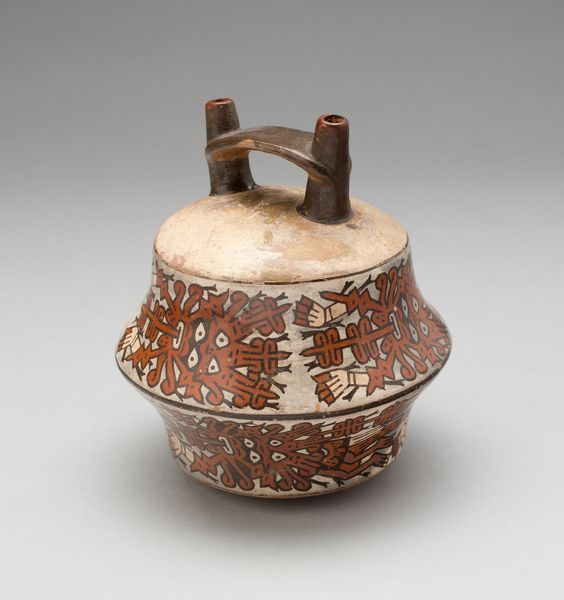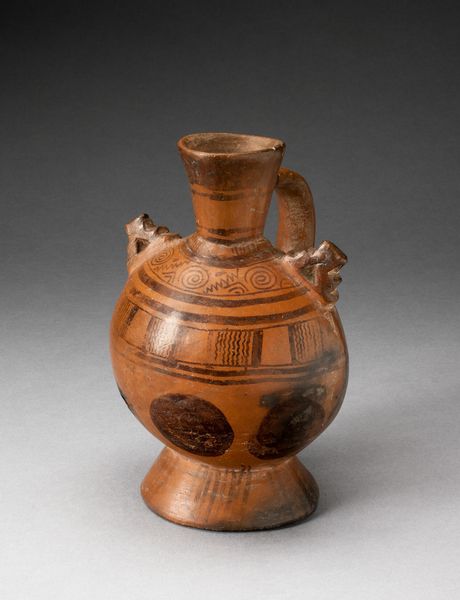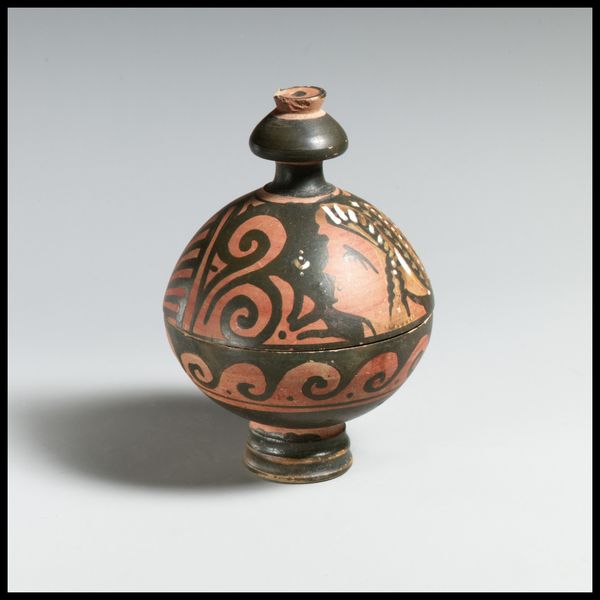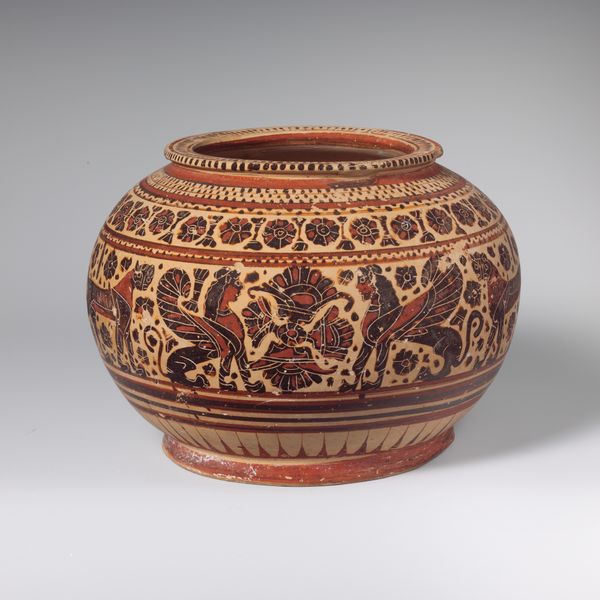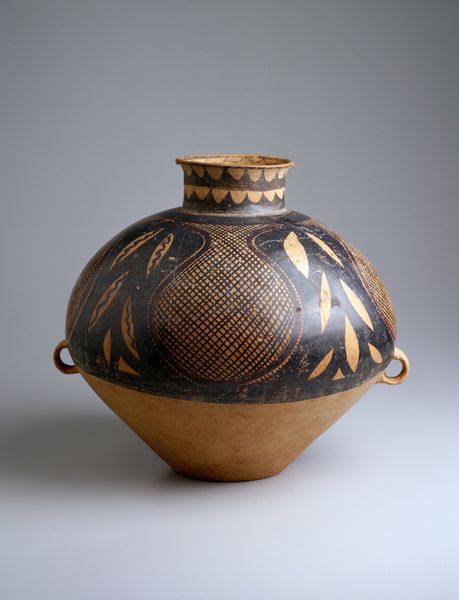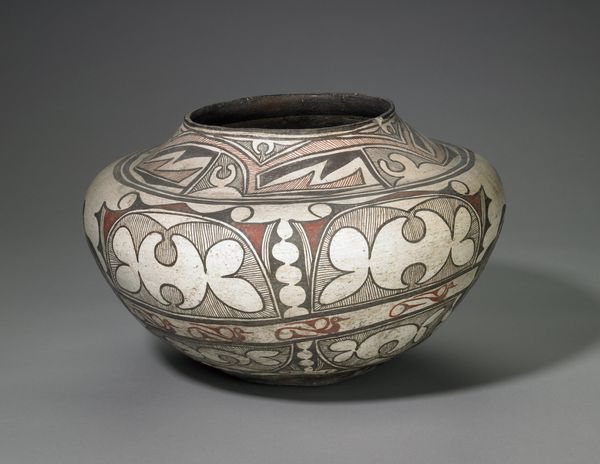
ceramic, earthenware
#
asian-art
#
ceramic
#
earthenware
Dimensions: Height: 17.5 cm.
Copyright: Public Domain
Curator: This covered wine pot or teapot, dating from 1662 to 1722, is a delightful piece from the Qing Dynasty, currently housed at the Metropolitan Museum of Art. Editor: It's so vibrant! The riot of colors, especially the floral patterns set against those grid-like divisions, feels surprisingly modern for something so old. I am struck by the ceramic earthenware from which it is composed. Curator: Indeed. These wares were important not just aesthetically, but as signifiers of status. Consider the porcelain industry—the kilns, the skilled labor. Such pieces reflect the prosperity and imperial ambitions of the era. Who possessed it mattered too: these delicate objects functioned as symbols of taste within elite circles. Editor: It makes me think about the global networks even then. Where did the raw materials come from, how did its makers achieve those colors? Look closely and you see how each square segment, divided like it is into red, green, and neutral bands, holds little universes, from butterflys to botanicals. It feels both systematic and chaotic. I wonder how the potters worked—did a single artist make the vessel, and other painters create the decorative details, or would have an apprentice make copies? Curator: Those are excellent questions. There's ongoing debate about workshop practices. The pot could have been passed down through generations. Beyond the technical artistry is how such luxury ceramics fueled social distinctions—ceremonial usage as an assertion of taste and privilege within the increasingly powerful court culture. It shows that taste itself became institutionalized. Editor: I keep returning to that handle, and it reminds me that its for service. Was this for public banquets, intimate ceremonies? Curator: Probably the later: elite families likely hosted exclusive social gatherings using vessels exactly like this to establish their rank through a show of carefully constructed artistic settings. This wasn’t casual, that’s for certain. Editor: So, what started as a visually intriguing teapot really is more about empire, labor, global networks, taste, and status, all concentrated within this ornate object. It tells quite the story. Curator: Exactly. Its mere survival tells a narrative—a testament to changing tastes, preservation efforts, and shifts in art appreciation.
Comments
No comments
Be the first to comment and join the conversation on the ultimate creative platform.
